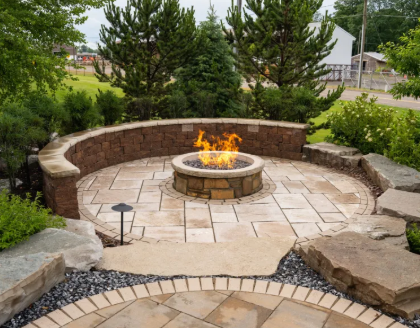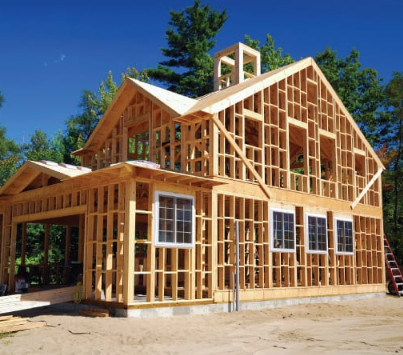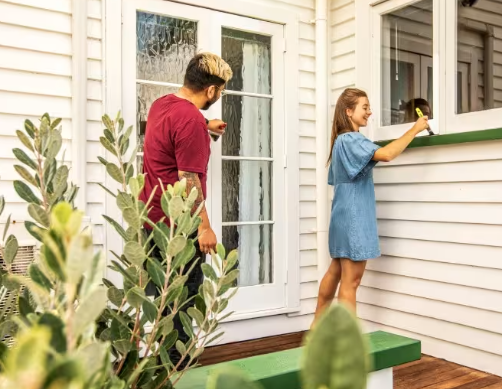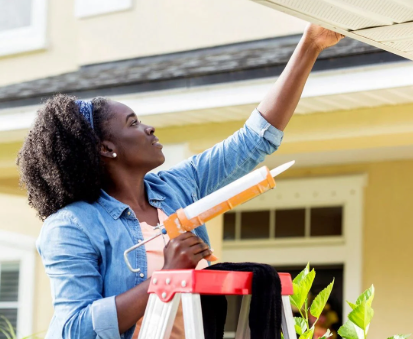Winter brings temperature swings and harsh weather, making home maintenance crucial. Prepare your home now to prevent costly damage later.
Check Heating and Ventilation Systems
It’s essential to inspect heating and ventilation systems in advance. Winter is long, and your home relies on these systems for warmth. If a heating system is blocked or malfunctioning, extremely cold weather can become a serious problem. Homes over 15 years old should have a full inspection before winter.
Pay attention to furnace filters or air filters and vents, which are often overlooked. Cleaning them every three to six months is recommended. For routine maintenance, a vacuum can remove dust to ensure proper airflow. Hiring a qualified professional for inspection and cleaning is the simplest and most reliable approach. However, if you are handy, you can purchase replacement filters online, matching the size of your vents, which is simple and cost-effective.
Check the Humidifier
If your home has a central humidifier, the filter should be replaced annually. This is often overlooked. While many homeowners remember to change furnace filters, few replace the humidifier filter. A central humidifier works like lungs, providing clean, moist air; a moldy filter can circulate harmful air and may lead to respiratory infections over time.
Filters can be bought at stores like Home Depot. It’s best to remove the old one, place it in a large plastic bag (to avoid debris), and take it to the store to find a replacement of the same size and shape. This avoids measuring errors and makes finding a physical match easier.
Inspect Indoor and Outdoor Vents
Carefully check intake, exhaust, and forced-air vents to ensure they are not blocked by snow or debris, and that vent flaps are closed. After every snowfall, check outdoor vents and gas meters to make sure they aren’t covered by snow. Professional cleaning of all exhaust vents ensures you breathe fresh, clean air throughout the winter.
Check Bathrooms and Kitchens
Inspect smoke detectors and all fire extinguishers, replacing or recharging them if necessary. During winter, homeowners often seal their houses tightly for warmth, but this can increase carbon monoxide risk. Carbon monoxide is known as the invisible killer due to its colorless and odorless nature. Regularly check carbon monoxide detectors. If the battery is low, a red light may blink, or it may beep every few minutes, indicating replacement is needed.
During winter, homeowners should test detectors monthly by pressing the “test” button. Smoke detectors should also be tested regularly, and both detectors generally need replacement every 5–7 years.
Inspect Fireplaces
Gas fireplaces should be checked to ensure they ignite properly and that spark plugs are not blocked. Many people leave fireplaces unused all year, only to find them inoperable when needed. Waiting until selling the house to repair can waste time, effort, and money.
For older homes with traditional wood-burning fireplaces, ensure vents are closed if the fireplace won’t be used in winter, preventing heat loss. Many people are unaware of small vent doors inside fireplaces—sealing them can save significant energy. Also, inspect chimneys for leaves, as debris can pose fire hazards.
Check Electrical Systems
Inspect indoor and outdoor lights, wiring, plugs, and outlets. Replace any worn or overheating components immediately.
Inspect Doors and Windows
Check for ice buildup or drafts. Seal gaps with double-sided tape or rubber strips. For the bottom of doors, secure rubber strips with nails. For window seals, use caulk for gaps smaller than 1/4 inch, and expandable foam plus caulk for larger gaps. Over time, seals can loosen from sun and weather exposure.
As an alternative to replacing entire windows, consider a Window Insulator Kit, a transparent windproof layer costing only \$20–30. It includes double-sided tape and plastic film. Apply tape to the frame, attach the film, and use a hairdryer to shrink it tight. It’s almost invisible and can be removed in summer and reapplied in winter.
Inspect the Attic
Ensure proper insulation and ventilation. Check for roof leaks, separation of boards, frost accumulation, ice dams, and icicles. Make sure vent pipes have insulation and vapor barriers, and are properly vented outdoors.
Inspect the Roof
Check shingles for damage or looseness to prevent leaks from melting snow. Clean gutters before snowfall; clogged gutters can cause melted snow to back up into the attic.
Inspect Basement Floor Drains
Ensure drains contain water; add water if necessary.
Check Hot Water Pipes
Maintain water heater efficiency by removing sediment and cleaning the storage tray. Ensure pipes are insulated. Close indoor valves and drain pipes if outdoor faucets are not frost-proof.
Check All Indoor Faucets
Inspect for leaks and repair promptly. For rarely used pipes, run water, fill drains, and open and close shut-off valves to prevent contraction. Clean sinks, dishwashers, bathtubs, and shower drains.
Prepare Outdoor Water Systems
Before winter, drain and close outdoor valves to prevent pipes from freezing and bursting. Typically, valves have indoor and outdoor controls—close indoor taps first, then drain outdoor lines.
Prepare Winter Supplies
Stock ice melt, snow shovels, windshield de-icer, and snow brushes. For gas-powered snow blowers, store gasoline. Inspect shovels and replace broken ones before the first snowfall.
Summary
Winter home maintenance protects safety, comfort, and energy efficiency. Inspect heating, ventilation, humidifiers, detectors, fireplaces, windows, doors, plumbing, and roofing. Proper preparation, cleaning, and sealing prevent damage, reduce health risks, and ensure a cozy, safe winter environment.





